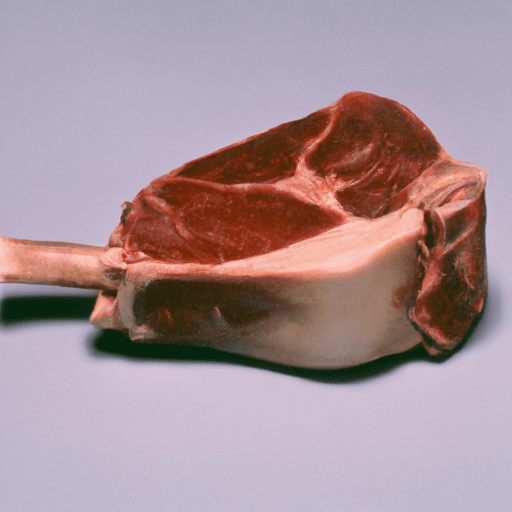The Versatile Beef Bones: A Culinary Gem
If you’ve ever savored a rich, flavorful broth or marveled at a succulent, fall-off-the-bone meat dish, chances are you can attribute that delectable experience to the humble beef bone. Often overlooked, beef bones are a treasure trove of flavor, nutrition, and versatility. In this article, we’ll delve into the world of beef bones and explore their taste, common uses in cooking, nutritional value, and some fascinating history and facts.
Exploring the Flavor of Beef Bones
Beef bones, when cooked low and slow, have a remarkable ability to infuse any dish with a delightful depth of flavor. The collagen-rich marrow within the bones melts during cooking, releasing a velvety richness that enhances soups, stews, and sauces. The resulting taste is often described as hearty, earthy, and savory, making it a perfect base for robust dishes.
Common Uses in Cooking
Beef bones are a staple in many culinary traditions around the world. From the comforting French classic, beef bourguignon, to the aromatic Vietnamese pho, beef bones play a vital role in creating complex and memorable dishes. Here are a few popular uses:
- Broths and Stocks: Beef bones are the foundation for creating flavorful broths and stocks. Simmered for hours with aromatic vegetables and herbs, they release their essence, resulting in a luscious and savory base for soups, stews, and sauces.
- Braised Meats: Whether it’s short ribs, oxtail, or osso buco, beef bones add tenderness and depth to braised meats. The slow cooking process helps to soften the connective tissues, resulting in succulent, melt-in-your-mouth dishes.
- Bone Marrow: The rich, buttery marrow inside beef bones is a delicacy in its own right. Roasted and spread onto crusty bread, it’s a luxurious treat that meat lovers rave about.
Nutritional Value
Beyond their culinary contributions, beef bones also offer a range of nutritional benefits. They are packed with essential minerals like calcium, magnesium, phosphorus, and trace elements such as zinc and iron. Collagen, found abundantly in bones, provides amino acids that support joint health, skin elasticity, and gut health. When simmered for an extended period, bones also release gelatin, renowned for aiding digestion and supporting overall gut health.
History and Fascinating Facts
Beef bones have long played a significant role in culinary traditions across cultures. Here are a few intriguing historical tidbits:
- Bone Broth Through Time: Bone broth has been consumed for centuries, with records dating back to ancient Chinese, Greek, and Roman civilizations. It was often considered a nourishing elixir used to restore health and vitality.
- Use in Traditional Medicine: In traditional Chinese medicine, beef bones have been prized for their ability to nourish the body’s energy (Qi), strengthen the kidneys, and enhance overall well-being.
- Waste-Not, Want-Not Mentality: Historically, using every part of an animal was essential out of respect, practicality, and frugality. The practice of utilizing beef bones is deeply rooted in this mindset, showcasing the resourcefulness of traditional cooking.
Beef bones, with their incredible taste, versatility in the kitchen, and nutritional value, truly deserve a place of honor in our culinary repertoire. Don’t let their unassuming appearance fool you - these culinary gems have the power to elevate your dishes to new heights. So, next time you come across beef bones, embrace the opportunity to explore new flavors and create memorable meals.
Remember, when it comes to cooking with beef bones, patience pays off. Simmer them low and slow, and your taste buds will thank you for the magic that ensues.
Here are some interesting facts about beef bones:
Origin: Beef bones come from the skeletal system of cattle, particularly the bones from the limbs and spine.
Common Uses: Beef bones are commonly used to make flavorful stocks, broths, and soups. They are also used to add richness and depth to stews and sauces. Additionally, beef bones can be roasted and used to make bone marrow, a delicacy enjoyed in many cuisines.
Nutritional Benefits: Beef bones are rich in nutrients. When used to make stocks and broths, they can provide essential minerals such as calcium, magnesium, and phosphorus. Furthermore, they are a source of collagen, a protein that helps support healthy joints, skin elasticity, and connective tissues.
Unique Properties: Beef bones contain bone marrow, which is a nutrient-rich substance found inside the bones. Bone marrow is highly regarded for its rich and buttery flavor. It can be enjoyed spread on bread or used as an ingredient in various dishes. The size and shape of beef bones can vary depending on the specific cut of meat it comes from.
Historical Significance: Bones, including beef bones, have been used in cooking for centuries. In many traditional cuisines, bones were valued for their ability to add depth and flavor to dishes. They were often saved and used to make hearty stocks and soups, which played a significant role in nourishing communities.
It is important to note that while beef bones can enhance the flavor and nutritional value of dishes, they should be handled and cooked properly to ensure food safety.




Use the share button below if you liked it.
It makes me smile, when I see it.